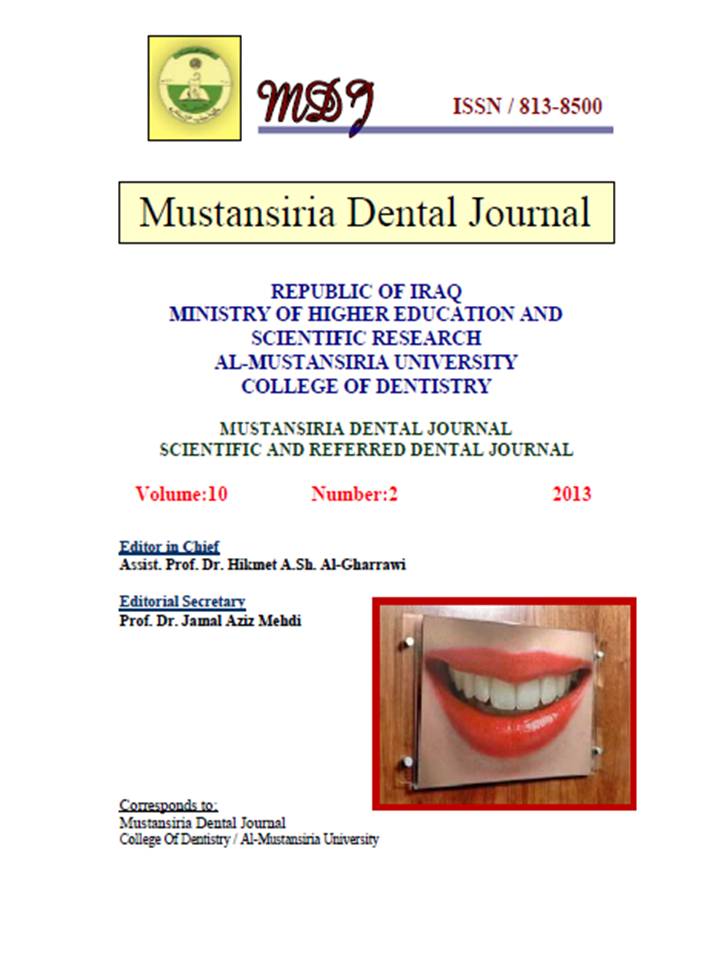Evaluation of Pain response experienced by the patients after normal teeth extraction according to the operator genders
DOI:
https://doi.org/10.32828/mdj.v10i2.226Keywords:
Key word: evaluation, pain, extraction, genderAbstract
Gender stereotypes can lead to a variety of generalizations that affect the
perceptions of patients. Pain mechanism start with peripheral stimuli which will
initiate the afferent nerves fibers that will transmit the signals towards the central
nervous system through the spinal cord into the cerebral cortex where the pain signal
will be translated.
The aim of this research is to evaluate the complex assessing of patient’s pain
perception in relation to the gender of the dentist during normal teeth extraction.
Samples in this study was composed of (50) patients, divided into two equal
groups, first group treated by male students and the second’s group treated by female
students.
The results of statistical analysis of data showed that pain perception by the
patients was in mild status more in male group 18(72%) than female group
4(16%),While in moderate was less in male group 5(20%) than female group
15(60%),and in sever also less in male group 2(8%) than female group 6 (24%).
A significant difference was shown between the two students' gender in case of
moderate and sever pain status (Chi-square in moderate status 8.33 & p-value= 0.004
while in sever status 2.381 & 0.048respectively), while high significant difference in
mild status (Chi-square15.91and P<0.01).
In Conclusions: A statistical analysis showing that pain perception experienced by
the patients treated by male students’ operator liable to be less than those treated by
female students’ operator.

Downloads
Published
Issue
Section
License
The Journal of Mustansiria Dental Journal is an open-access journal that all contents are free of charge. Articles of this journal are licensed under the terms of the Creative Commons Attribution International Public License CC-BY 4.0 (https://creativecommons.org/licenses/by/4.0/legalcode) that licensees are unrestrictly allowed to search, download, share, distribute, print, or link to the full texts of the articles, crawl them for indexing and reproduce any medium of the articles provided that they give the author(s) proper credits (citation). The journal allows the author(s) to retain the copyright of their published article.
Creative Commons-Attribution (BY)








